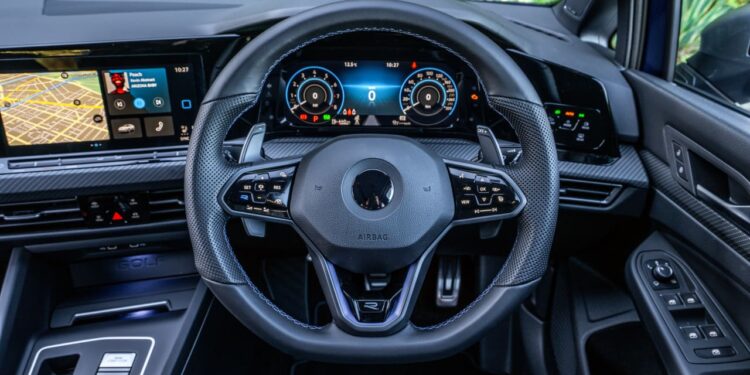Volkswagen’s controversial touch-sensing steering wheel controls will be replaced by physical buttons on future models, but the German car-maker is yet to confirm whether the common-sense decision will also apply to infotainment screens and air-conditioning controls.
German auto giant Volkswagen will join a growing number of car companies to backtrack on the roll-out of touch-sensing controls and bring back physical buttons to future models.
In a post on social media forum LinkedIn, the global boss of Volkswagen, Thomas Schäfer said: “We are bringing back the push-button steering wheel”.
Launched in 2019, the touch-sensing steering wheel controls (also known as haptic or capacitive touch buttons) allowed drivers to adjust functions such as the sound system volume, digital dash mode and cruise control speed/distance – by using touch.
However, Volkswagen’s touch-sensing steering wheel controls were criticised for being hard to operate when the driver’s attention is on the road, with the touch areas either too sensitive or not quick enough to respond.
Volkswagen Australia introduced the touch-sensing steering wheel controls in 2020 when the Touareg R arrived in local showrooms, with the technology now appearing on the Golf R-Line/GTI/R, Arteon, Tiguan R-Line/R, T-Cross R, T-Roc R-Line/R, and Polo GTI.
Volkswagen is yet to confirm when physical steering wheel buttons will return on models currently lacking this convenience.
However, the new Amarok ute – developed with Ford – will cut straight to the chase and launch with physical buttons.
As previously reported, a test mule for the eight-generation Volkswagen Golf’s mid-life update has been caught on camera in Germany, with its steering wheel showing physical buttons – carried over from the current hatchback’s base and Life variants.
While steering wheel controls will become physical buttons it is unclear when the same common-sense decision will apply to the touch-sensitive climate system controls.
In August 2022, reports out of Germany suggested the updated Golf will gain larger digital instrument and infotainment screens, growing from their current 10-inch sizes to 10.4 and 12.9 inches respectively.



